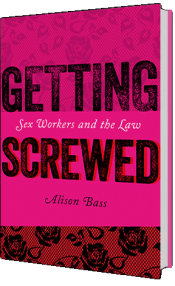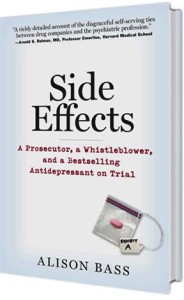At a recent book talk, one attendee asked me how I dealt with the intimidation and threats that often comes with writing tough investigative stories about powerful individuals and institutions. Her question brought to mind an incident that I didn’t end up including in my memoir, Brassy Broad: How one journalist helped pave the way to #MeToo. When I worked at The Miami Herald in the early 1980s, I had written a story about how mentally challenged and emotionally troubled children in a residential treatment center in Hialeah (just northwest of Miami) were being sexually and physically abused by some staff there. The story was based not only on the accounts of seven current and former employees of the residential center but also on a report by the New York Council on Children and Families that was highly critical of this treatment center (the report prompted New York state to withdraw all 60 of its wards from the Hialeah facility). Even though I had nailed the story, the Herald’s editors buried it on page six of the paper’s front section, and I dashed off an angry email to the city editor. saying that the piece had deserved page one treatment. Shortly after that, an assistant city editor called and admonished me for complaining.
“That’s not how to get ahead at The Herald,” she said.
As if that wasn’t bad enough, the owner of the treatment center, a guy by the name of Adelio Montanari, called me at home. He said he was connected to the Mafia and that if I continued to write about his center, I could get hurt. The phone call shook me up – was this guy really connected to the mob? Eventually, I decided no one who was really a mobster would be so stupid as to issue such an obvious threat. A few days later, I wrote a follow-up story about how local Hialeah residents wanted to see the treatment center closed. Even so, my immediate editors told me to move on. I remember feeling very hurt and alone. No other news outlets had joined me on the story and it seemed clear the paper’s editors didn’t want me pursuing investigative stories of this nature.
Fast forward a decade, to 1992. I had been working at The Boston Globe for several years and seemed to have become the defacto reporter for sexual abuse cases. I explain why in my memoir and relate the story of how an attorney I knew called me late one afternoon in May 1992 and tipped me off to a story about a Catholic priest who had sexually abused children in the parishes he was assigned to. I broke the story for The Boston Globe, which turned out to be the first the paper ever published about the problem of pedophile priests. In this case, however, other news media had also been tipped off to the story, so The Globe couldn’t exactly bury it, and indeed under the direction of then Metro Editor Ben Bradlee Jr. we pursued it aggressively. Other reporters jumped on board and even though Cardinal Bernard Law called down “God’s power” on the Globe, a clear effort to intimidate us, I didn’t feel so alone. I was part of a team trying to shine the spotlight on a long-suppressed cancer in the Church. While our investigation into whether the Boston Archdiocese had tried to cover up the crimes of its molesting priests was shut down two years later by the new top editor (I think he buckled to pressure from the Church), I learned something valuable from this experience. When journalists band together and people are willing to speak up, intimidation and threats find less fertile ground.
Postscript: The Montanari treatment center finally closed its doors in 1996, after yet another lawsuit accusing its operators of mistreating severely disabled children. And in 2001, The Globe hired a new top editor and one of his first acts was directing the paper’s Spotlight team to start investigating the Archdiocese’s attempts to cover up the misdeeds of its priests. If you want to know the rest of this story, all you have to do is check out the movie Spotlight, which won the Oscar for Best Picture in 2016.



Trackbacks/Pingbacks